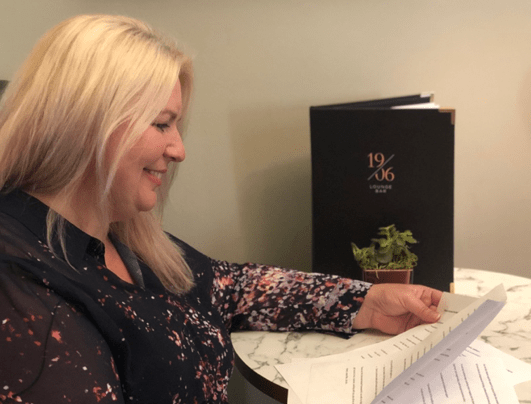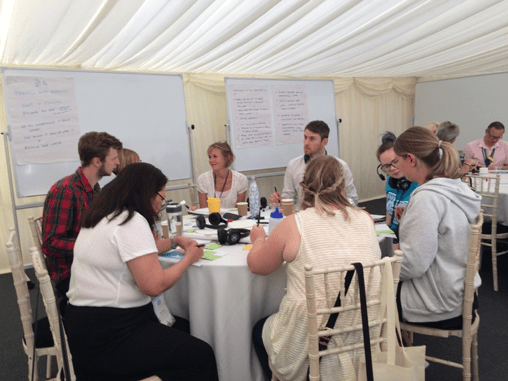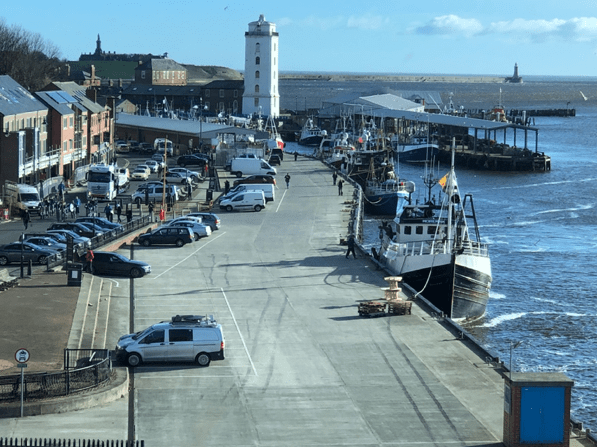Posted in Blog, Innovation by Jo North
Open Innovation
Have you considered Open Innovation for your business?
If you lead a larger organization, have you considered open innovation to help tackle your most significant challenges and opportunities?
Or, if you lead a smaller start-up business, have you ever thought about collaborating with big business through open innovation programs?
Maybe you’re a university researcher, interested in finding applied uses for your new discoveries?
If you’re not already thinking about open innovation, I hope this article helps you to consider it for your organization.
What is Open Innovation?
Open innovation is an approach taken by a business or organization to access the ideas, technology and knowledge that is available externally. It goes beyond employees and the current supply chain.
Open Innovation is an approach taken by a business or organisation to access the ideas, technology and knowledge that is available externally, beyond its employees and existing supply chain. Share on X
Not every business develops everything in high levels of secrecy until new products are ready to launch into the world. More companies are seeing the benefits of working with new, diverse networks for some of their own new product development and solution finding. Those companies are also beginning to release some of their applied and unused innovations outside. More and more organizations are benefiting from open innovation.

Understanding the Open Innovation Model
The concept of open innovation was first used by Henry Chesbrough. It is a new paradigm from the one many organizations are used to, differing from traditional closed innovation models. It represents a shift in how companies think about their innovation strategy. The model allows for the use of purposive inflows and outflows of knowledge to accelerate internal innovation and expand the external use of innovation.
Open Innovation is Happening Around the World, in All Sectors
Open innovation started in the commercial sector, with businesses such as IBM, Unilever and Phillips taking the lead. It is now becoming more used in the social sector, and by government organizations.
Organizations such as NASA publish innovation challenges and crowd source solutions for them. Their open innovation program includes; student and citizen science initiatives; aeronautics; astronomy; earth science; engineering and modeling; health and medicine; IT; living in space; multimedia production and design;, physical sciences; and planetary science! They run competitions and challenges with prizes.
Why Open Innovation is a New Imperative
Sticking solely to internal R&D can limit a company’s innovative potential. The open innovation model allows you to tap into external knowledge and resources. This makes it a new imperative for businesses large and small. Companies can capitalize on the best ideas from external partners and achieve a competitive advantage.
Types of Open Innovation
There are numerous ways to achieve open innovation. Companies can participate in joint ventures, become part of an open innovation platform, or collaborate with research institutions. Recent years have also seen an increase in open business models that leverage external resources for successful innovation.
Engaging with Larger Corporations
For smaller businesses looking to participate in open innovation initiatives with large corporations, understanding the specific challenges faced by these industrial titans is crucial. Large companies often have multiple layers of decision-makers, and navigating this landscape requires focus. Present your innovative ideas in ways that align with the corporation’s business unit goals.
Starting Your Open Innovation Program
If you’re looking to initiate an open innovation program within your company, involve different perspectives from the get-go. Engage external stakeholders, academic institutions, and even venture capital firms to ensure a holistic innovation ecosystem.
Use of Internal Resources
Successful companies don’t ignore their internal resources. It’s essential to integrate external ideas with internal ideas for a comprehensive approach to your innovation funnel. Remember that the lion’s share of valuable ideas can sometimes come from your own innovation culture.
Challenges in Specific Industries
In industries like pharmaceuticals where there is strong competition and little protection for fundamental discoveries, the open innovation approach becomes even more vital. Here, you can’t afford to waste a lot of time on basic research. Partner with the world’s finest industrial R&D organizations to fast-track the process.
Evaluating Success
Your open innovation paradigm should evolve. Use metrics and KPIs that reflect not only new revenue streams but also process innovation. Regularly ask the following question: Are we effectively combining external paths with our own to drive successful innovation?
The Changing Face of Innovation
In earlier decades, leading industrial enterprises of the past like premier industrial research organizations relied heavily on internal innovation. Today, companies such as Mercedes, shown here in the MIT Sloan Management Review and this Fujitsu case study from the Harvard Business School use open innovation. The case studies highlight the importance of external sources of innovation in today’s business landscape.
The shift towards external ideas and external parties is no longer an option but a necessary strategy for today’s businesses.
Open Innovation Events
Open Innovation events such as the World Open Innovation Conference and Smart City Expo World Congress provide meeting points for the people interested in open innovation ecosystems.
Corporate leaders, public representatives, entrepreneurs, experts and academics from all around the globe get together to exchange knowledge and collaborate.
Events such as these are great for inspiration and networking of course – but you’ll also find lots of opportunities locally. Here are just a few UK examples which I hope will inspire you to explore further.

Northumbrian Water Innovation Festival
I have facilitated many innovation sessions at Northumbrian Water’s Innovation Festival.
I have also written on innovation in the UK water industry for the Institute of Water.
More than 3,000 people from nearly 700 leading organizations attend Northumbrian Water’s annual Innovation Festival.

The aim of the Innovation Festival is to come up with innovative solutions to some of the biggest and hard-hitting challenges faced by society and the environment, within five action-packed days.
Water industry professionals join engineers, local businesses, students, designers and members of the public join to focus on key issues. These include climate change, the impact of 5G and vehicles of the future and more. Around 1,800 young people also join to find out about careers in science, technology, engineering, art or maths (STEAM).
Join the Northumbrian Water Innovation Festival Next Year
Companies and members of the public are very welcome to attend for free and can register for the activities they want to join via the Innovation Festival website. It’s a great opportunity to meet great businesses inside the water industry and beyond. Here is more information if you’d like to attend next year.
Transport for London
Transport for London (TfL) wants to work with start-ups, SMEs, corporates, accelerators, and investors through their innovation Hub to improve London and TfL.
They want to make it easy for market innovators to work with them so have created an online Innovation Portal, which you can access here.

TfL has worked in partnership with Waze to use data to keep customers informed, reminded and updated to reduce traffic incidents. Waze is a tech-enabled community of millions of people round the world who connect to create a ‘living map’ to reduce traffic, improve safety and make the roads better.

Sellafield’s Game Changers Open Innovation programme
Decommissioning ageing nuclear engineering sites is an enormous project. The process takes over 100 years to complete, and costs in the $billions. Because the UK has been a leader in nuclear energy since the 1940s, this means that the complexity, time and cost of decommissioning brings challenges.
Challenge Statements
Sellafield’s Game Changers is an open innovation program. It gives external businesses and organisations the chance to bring their ideas and technologies to the UK’s largest decommissioning cluster.
Early stage ideas and projects that demonstrate genuine potential in-line with Game Changers published challenge statements and the overriding ambitions of the wider UK nuclear decommissioning program could receive a grant of up to £10k. The funding is to shape the idea, with support and access to FIS360 and National Nuclear Laboratory expertise and staff at Sellafield. If successful, additional Proof of Concept (PoC) funding is available for further development.
Examples of Open Innovation at Sellafield
All intellectual property rights stay with the proposer. Neither Sellafield Ltd, National Nuclear Laboratory nor any of the Game Changers delivery partners have any IP rights over the ideas.
You’ll find all the info you need on the Game Changers website. The full process and how to apply is there, and this information is very clear, easy and accessible.
Just a few examples of the challenges, amongst several others, include:
- Delivering change through robotics at Sellafield
- Physical asset management
- Identifying unknown sharps in glove boxes
- Modelling and knowledge management
You can read about these and the other challenges on the Game Changers challenge page.
The UK’s first Maritime Innovation Hub – based at the Port of Tyne
The 2050 Maritime Innovation Hub is a partnership between a number of organizations. These include Port of Tyne, Nissan, Connected Places Catapult, Accenture, Royal HaskoningDHV, Offshore Renewable Energy Catapult, Drax, Fraser Nash, BT and Ubisoft. Together the partnership has created the UK’s first Maritime Innovation Hub.
Partners in the #2050InnovationHub collaborate to develop solutions to the net zero and tech challenges facing the maritime sector and the wider logistics industry.

These challenges include increasing efficiency, making UK ports more attractive to businesses at home and abroad as well as ensuring the UK continues to lead the way in maritime technology into the future.
Catalyst for Idea Sharing and Problem Solving
The 2050 Innovation Hub is a catalyst for sharing ideas, harnessing research and development, advancing technology and tackling shared challenges. It’s an exciting time because there is such a great variety of events. The intention is to harness skills and innovation from all industrial sectors to develop a global proposition. This will enhance maritime competitiveness. Plus it will work on attracting more young people into the maritime sector.
The 2050 Innovation Hub fully aligns with the UK Government’s Maritime 2050 Strategy.

If it’s something you’d like to participate in, our know more about, you can contact Port of Tyne direct here.

Open Innovation and Your Business
These are just a few examples of the open innovation and collaboration opportunities that are live right now. There are many others. If you’d like to know more or want to explore accessing open opportunities for your business, please do get in touch and I will help. You can contact me direct here. I’m looking forward to hearing from you.

